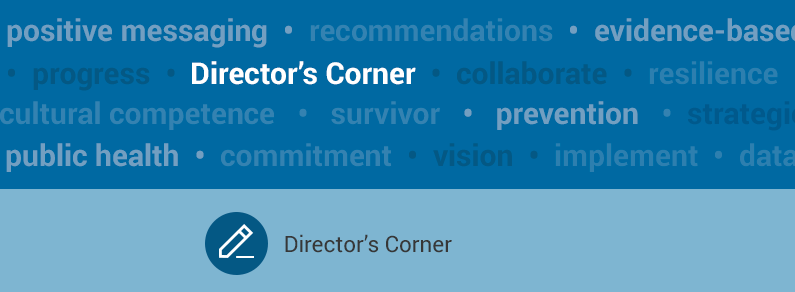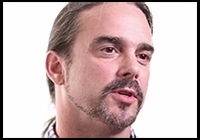National Suicide Prevention Lifeline: The First Ten Years
January 05, 2015

The tenth anniversary of the National Suicide Prevention Lifeline provides an opportunity to look back and ask “What have we accomplished?” The first accomplishment that comes to mind is the expansion of our services. In 2005, we started with a network of 109 centers and answered about 20,000 crisis calls. In 2014, our expanded network of 165 member centers answered about 1.5 million calls. In the ten years since the Lifeline began, our centers have answered more than five million calls from people in suicidal or emotional crisis. I am proud of how the Lifeline has grown and reached more people. But I’d also like to explore some less obvious accomplishments of the National Suicide Prevention Lifeline.

I would argue that our most fundamental contribution has been to help foster a collaborative environment that supported the field of suicide prevention as a discipline and as a community, increasingly recognized as an essential part of the behavioral health care system. This collaboration begins with our relationship with the Substance Abuse and Mental Health Services Administration (SAMHSA), the federal agency that funds the Lifeline. Our relationship with SAMHSA has always felt like a true partnership. SAMHSA shares our passion and dedication for our work, supports us at every turn, understands our challenges, and helps us to address these challenges effectively. This collaboration has made all of our accomplishments possible.
When the National Suicide Prevention Lifeline was created, crisis centers lacked two essential elements: cohesion as an integrated network and recognition in the field of suicide prevention. The original National Strategy for Suicide Prevention, for example, did not mention crisis centers or hotlines. We at the Lifeline knew that we had to address both of these issues. We needed to bring together experts in crisis work with experts in suicide prevention, research, and training as well as leaders in behavioral health and mental health consumer advocacy, so we created a network of advisors and consultants from all of these fields. Although our grant only required us to have one advisory committee, we created three: a Steering Committee, a Consumer/Survivor Subcommittee, and a Standards, Training, and Practices Subcommittee.
While meeting with staff from the Lifeline and our crisis centers, the people on these committees also got to know and learn from each other and to share ideas. These meetings helped forge relationships that strengthened both the work of the Lifeline and the field of suicide prevention. Crucially, they also raised the profile of crisis centers within that field. The 2012 revision of the National Suicide Prevention Strategy acknowledges the importance of crisis centers as an integral part of our nation’s efforts to prevent suicide. Our local crisis centers have in turn improved the visibility of suicide prevention and contributed to the coordination of services in communities throughout the nation. We are extremely proud of our role in creating collaboration and connection for the field of suicide prevention at both the national and community levels.
A second accomplishment of the Lifeline over the last ten years is our contribution to promoting best practices. This would not have been possible without the SAMHSA-funded evaluations that accompanied the Lifeline grant. Here, I must recognize the contributions of Maddy Gould and her team at Columbia University, the late John Kalafat at Rutgers University, and Brian Mishara, Director of Montreal’s Centre for Research and Intervention on Suicide and Euthanasia. These evaluators produced the first clear evidence that crisis centers reduce suicidality and emotional distress and save lives. And, just as importantly, the evaluations showed us the areas where we needed to do better. They provided a roadmap for improvements in our service system, which in turn were evaluated, leading to the following milestones:
- National suicide risk assessment standards for Lifeline crisis centers
- A uniform policy for helping callers assessed as being at imminent risk
- The first randomized controlled trial of LivingWorks’ ASIST – the most widely used suicide prevention training – which demonstrated the program’s effectiveness in reducing suicide risk and showed which of its components produced this impact
- Clear and consistent evidence of the need to follow up with callers at risk of suicide as well as an understanding of why follow-up is effective in reducing suicide risk
- A “best practices” document for helping callers, which provides a framework for training, supervision, and quality improvement at crisis centers
The standards, policies, and practices emerging from SAMHSA-funded evaluations of Lifeline crisis centers provide lessons that can be applied across health and behavioral health care settings. The evaluations have also underscored the capability of crisis center leaders to influence suicide prevention efforts in their local communities, starting with helping communities understand how to support people in suicidal crisis or emotional distress.
A third achievement is our use of new technologies to better reach and serve people in crisis in the ways in which they want to be helped. In 2013, the Lifeline worked with CONTACT USA to pilot the nation’s first federally supported online crisis chat program. Crisis chat is now a permanent part of the Lifeline grant. Last year, without any advertising, our crisis chat service helped more than 60,000 visitors. The online chat will be expanded from 12 to 24 hours a day later this month, thanks to SAMHSA funding. Although few crisis centers have been funded to use this new approach, many provide chat services anyway because they know it is what people want. We are trying to help our crisis centers find local funding to expand this vital service approach, and Maddy Gould’s team at Columbia will be evaluating these services. The team’s findings may do for crisis chat what their evaluation results did for crisis hotlines – define best practices, establish credibility, and provide evidence that it is important to expand funding for this approach.
We also helped to pioneer and promote best practices for suicide prevention in social media and text messaging. The Lifeline’s ongoing partnership with Facebook continues to establish standards for suicide prevention in social media that are being replicated globally. Link2Health Solutions has worked extensively to enhance and promote promising practices that can help us serve people in crisis through texting.
The final category of accomplishments that I would like to note is the Lifeline’s service to specific populations. The Lifeline has long been a leader in including the voices of suicide attempt survivors in our work – reducing stigma and reaching people in crisis with messages of hope. These efforts have resulted in significant culture changes in our field, most recently to be seen in www.lifelineforattemptsurvivors.org, the Lifeline’s unique new microsite created to assist persons with “lived experience of suicidality.”
We are also serving veterans, active duty military members, and their families. Through a partnership with SAMHSA and the Department of Veterans Affairs, the Lifeline houses and supports the VA’s Veterans Crisis Line – the first national crisis intervention service specifically for veterans, current members of the military, and those who care about them (800-273-TALK, “Press 1”). Well over a million veterans and military members have chosen this option since the service was launched in 2007.
The Lifeline has been in the forefront of serving the specific needs of minority communities. The Lifeline established the only national suicide prevention hotline for Spanish speakers (800-273-TALK, “Oprima numero 2”). Currently, 11 crisis centers are networked through the Lifeline to assist Spanish-language callers. The Lifeline and local centers in Montana, South Dakota, North Dakota, Wyoming, and Alaska have worked closely with American Indian/Alaskan Native (AI/AN) communities to develop more culturally effective services for AI/AN people. This work led to a partnership with SPRC and the Native Streams Institute that produced a toolkit to promote collaboration between crisis centers and AI/AN communities.
We also provide special assistance for people who have been affected by disasters. The Disaster Distress Helpline (1-800-985-5990) was originally launched to address the needs of Gulf Coast communities affected by the 2010 British Petroleum oil spill. In 2011, SAMHSA fully funded this service to provide emotional support for victims of all disasters in the United States – both natural and human-caused. This service also provides technical assistance, training, and disaster preparedness for any Lifeline center affected by a disaster and helps its staff to apply best practices in promoting healing and resilience in their community after a catastrophic event.
I am proud of the Lifeline’s accomplishments over the last ten years. But I do not want to conclude without noting two of the greatest challenges we are now facing. Our highest rates of suicide are in geographic areas where there is little access to traditional services, and among men, who are less inclined than women to seek care through traditional venues. If we want to prevent suicide, the care we provide must be delivered how, when, and where people want it. Not everyone is able or willing to go to outpatient clinics. Not everyone is able or willing to use the phone, chat/text lines, or social media. But if we expand our capacity in all those areas, we are going to reach people at risk when and how they want to be served. Our challenge is to convince the funders of behavioral health services, including insurance companies, to pay for services other than office visits and face-to-face care. The Lifeline’s crisis centers have the will and the capability to apply best practices for suicide prevention and behavioral health supports in innovative ways.
We must design a 21st-century health care system that reflects the culture it serves. We are inching in that direction, but we need to move faster. I think the Lifeline’s accomplishments make convincing arguments for breaking out of the box and looking at new ways to deliver effective behavioral health and crisis care services. I look forward to working with everyone in our field to build on our achievements and create a system of care that is truly “person-centered.”
